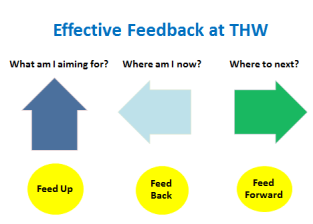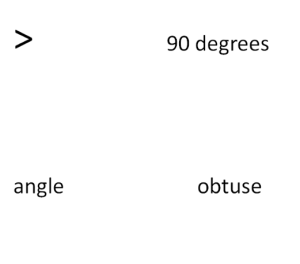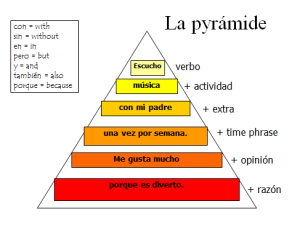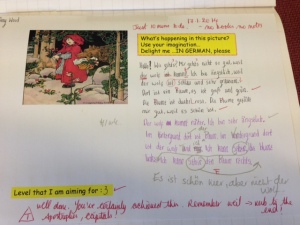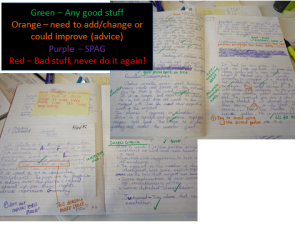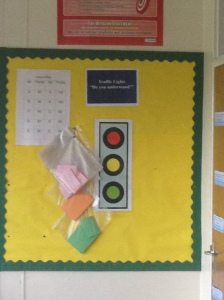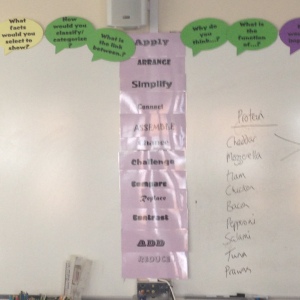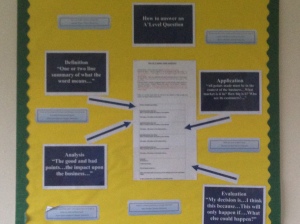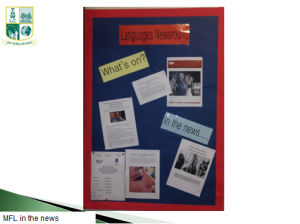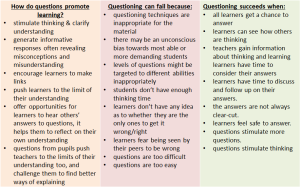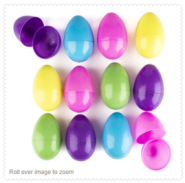Last Monday saw the launch of our brand new CPD format : our own THWTeachMeet!

In keeping with the whole school focus, differentiation was the theme for the session and, helped along by some cakes, hot drinks and a chat with colleagues, we shared ideas and good practice.
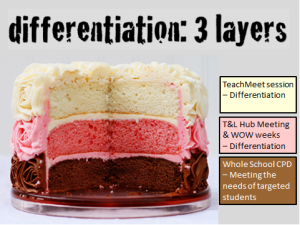
Here are the resources/strategies presented during the session:
Imogen – working with ASD pupils 5minASD
Claire – rulers/bookmarks using key words given to pupils to support them with writing skills rulers
Louise – differentiation strategies in art Art DIFFERENTATION PP
Sandra – differentiating the starter, the development & the plenary Differerentiation
Agi – differentiation by task Salt from rock salt for more able pupils with differentiated version for lower ability pupils 7Hb4
Bertram – Pupils differentiate themselves (are they at breakthrough level and able to do the task maybe with some mistakes? skilled and are 100% accurate? or expert and can extend their sentences?) Breakthrough Skilled Expert
Vicky & Sukhi – differentiation in Tech differentation in Tech
Deb – differentiating homework
Instead of spending hours writing differentiated questions in every pupils book, try the following technique:
1) Read through some of the pupils books to get an idea of where pupils went wrong/misconceptions.
2) Write three questions based on the misconceptions on a separate piece of paper. One easy, one medium, one hard.
3) Number them 1, 2 and 3.
4) Instead of writing the question in the pupils books, write just the number in the book.
5) At start of next lesson have the three questions written on the board.
6) Pupils answer the numbered question in book.
7) Depending on ability they can either write the question out or they can answer in a whole sentence.
8) Go through answers to questions in whatever way you choose.
Optional: Give some pupils 2 of the questions if they are fast workers.
Benefits:
v Saves you lots of time as you don’t have to re-write the questions a million times
v Questions are differentiated to suit the different abilities; challenge for all pupils.
v Gives you time to give support to pupils that need it
v Clarifies any misconceptions from previous lesson/homework
v Identifies areas of weakness within group so more time can be spent ensuring pupils understand
A random name generator was used to select the order in which staff would present http://www.classtools.net/education-games-php/fruit_machine/

We also had a raffle at the end of the CPD following the latest “poundland pedagogy” craze. (Originally dreamt up by Isabella Wallace, the idea is simply to take inspiration from your local budget shops and think innovatively about how you might exploit these veritable treasure troves of tat teaching resources.) If you won any of the following prizes, let us know how you used them as new and exciting ideas to liven up your lessons!
 Plasticine can be used in a variety of subjects to model key concepts.
Plasticine can be used in a variety of subjects to model key concepts.
 Use washing lines to display work or to display ideas or a sequence of actions. Following on from Bertram’s idea, could also be used as a confidence line to show students’ progress.
Use washing lines to display work or to display ideas or a sequence of actions. Following on from Bertram’s idea, could also be used as a confidence line to show students’ progress.
 Decide on 3 differentiated tasks/questions (each represented by a tier on the cupcake tower). Give each pupil a cupcake case. On this ask them to write down an answer to the question/task they have picked or you have selected for them in the centre of the cupcake case. Then they have to put their completed cupcake case on the cupcake tower. End the activity listening to the ideas that have been shared.
Decide on 3 differentiated tasks/questions (each represented by a tier on the cupcake tower). Give each pupil a cupcake case. On this ask them to write down an answer to the question/task they have picked or you have selected for them in the centre of the cupcake case. Then they have to put their completed cupcake case on the cupcake tower. End the activity listening to the ideas that have been shared.
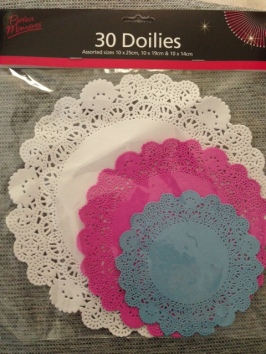 Practical and visual way of getting students to write PEE (or PEA, or PEEE or whatever you want to call it…) paragraphs. Ask them to write the three different parts of their PEE paragraphs on to each bits of the doily in a different colour. Then they have to tie each part together using some string.
Practical and visual way of getting students to write PEE (or PEA, or PEEE or whatever you want to call it…) paragraphs. Ask them to write the three different parts of their PEE paragraphs on to each bits of the doily in a different colour. Then they have to tie each part together using some string.
 No hands up policy- use noise makers for quizzes?
No hands up policy- use noise makers for quizzes?
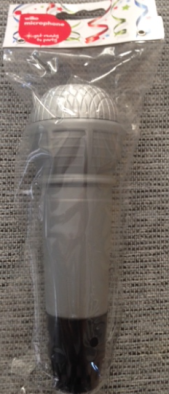 Any use as a prop for a speaking activity?
Any use as a prop for a speaking activity?
The session was a real success! The atmosphere was extremely positive and there was a real buzz!
“I really enjoyed it. The thing I wish that I had written down were all the things from Poundland and how to use them – they were great!”
“It was a great atmosphere! Such a useful session”
“It was a fantastic cpd and I would definitely do it. Looking forward to more of these cpd’s.”
So we hope to see even more of you at the next one 🙂
 better-marking-strategies T&L Hub Meeting Effective Feedback
better-marking-strategies T&L Hub Meeting Effective Feedback